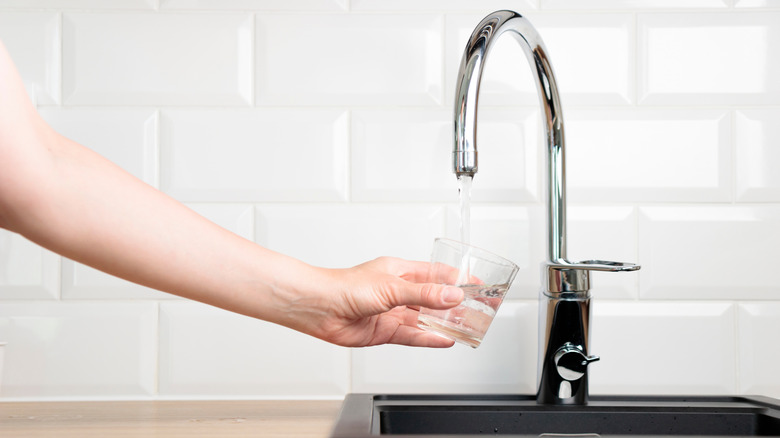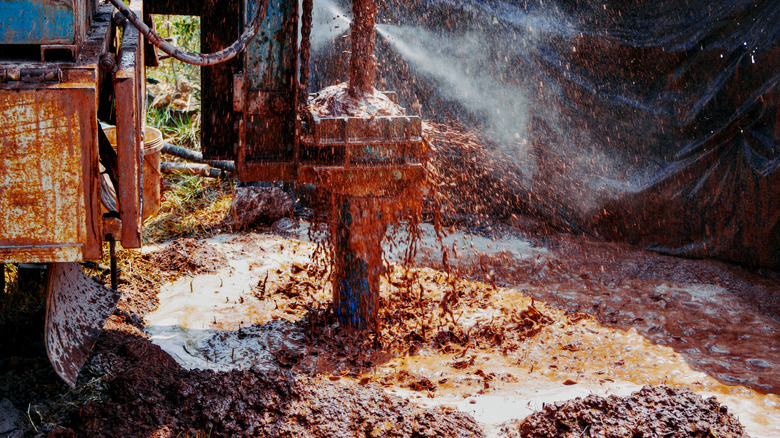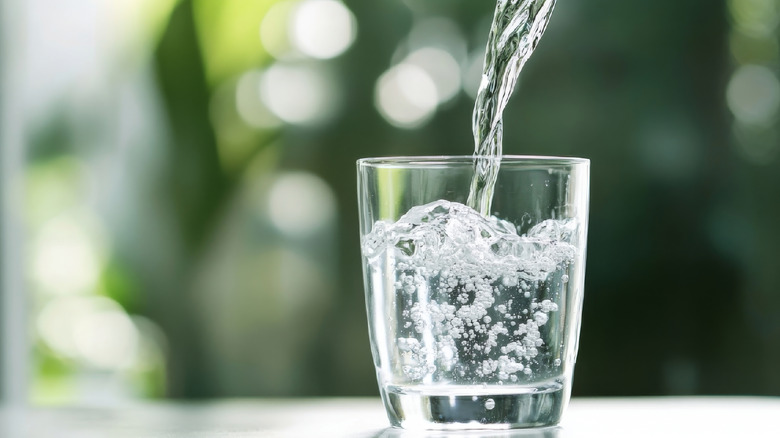The Extremely Small Percentage Of Earth's Water That's Drinkable
It is easy to take for granted our continuous freshwater supply. We get up in the morning and use our bathrooms. We have water to clean our dishes, wash our clothes, wipe down dirty countertops, and clean our fruits and vegetables before eating them. We drink water from our tap or a bottle, though forever chemicals found in bottled water have dissuaded some from that route. Most of us have never known what it's like not to have access to water when we need it. However, less than 1% of all water on Earth is actually drinkable. And it's having to keep up with an ever-increasing demand.
Despite Earth having more water than land, most of it is not practical for humans to drink. The majority is salt water, and most of the freshwater is far too difficult to access to be usable for such a huge population. Our freshwater is found in glaciers, icecaps, and groundwater, or within rivers, lakes, and swamps.
The demand for drinkable water keeps increasing due to the growing population. Consequences of this strain on resources include higher prices, water-use restrictions, and shallower rivers and lakes.
How does water get to our faucets?
It's worth noting that wells are still used around the world to access water, particularly in very rural communities or those with little public infrastructure. Many of us, however, get our water from public utility services.
These public utilities use surface water and groundwater to provide us with drinkable water. For groundwater, a well will be drilled to access water underground and then pumped to the surface. Surface water is found in lakes, rivers, and swamps. That water will be drawn out and evaluated to ensure its drinkability. The water is then treated to make sure it's safe before being available for customers.
The unfortunate reality is that there is a high demand for water that only gets higher with the increasing population. Unless we are aware of our own water usage, a future with very high water prices and water restrictions is a real possibility. However, scientists are currently researching ways to increase the amount of our drinkable water.
Increasing the amount of drinkable water
The amount of drinkable water remains constant – as it is continuously recycled without leaving the planet — but the number of humans drinking it continues to rise, putting pressure on these finite resources. However, research is being done to find out how we can increase the amount of drinkable water available to us. One such method is called desalination, which involves removing salt and minerals from salt water to make it drinkable. While this is theorized as a good approach because of the abundance of salt water on Earth, critics point out that it's energy inefficient and expensive.
Researchers at MIT are working on developing a gel that can turn air into drinkable water by using water vapor. There's also a company that's created a drinking water extractor that cools air via electricity to turn it into water, using the technology to supply water in desert areas. There's even a fog-harvesting machine that capitalizes on humidity and uses a mesh to collect water. Of course, weather conditions have to be ideal for this to be effective.
Despite the challenges of Earth's very limited supply, scientists and innovators are working hard so that one day the amount of drinkable water we do have to use might be greater than 1%.


